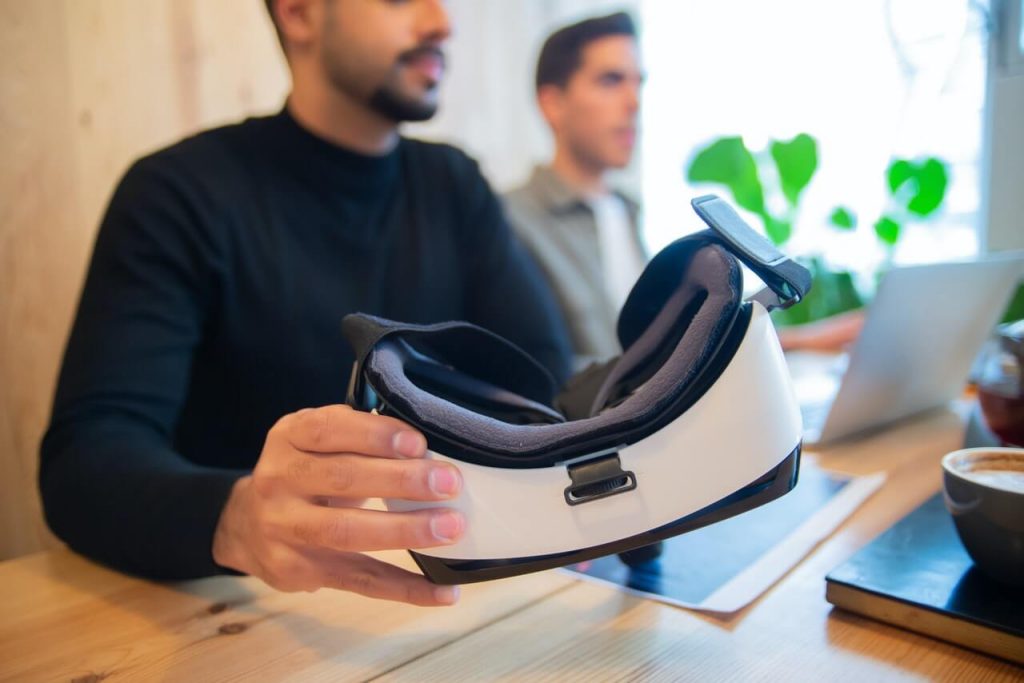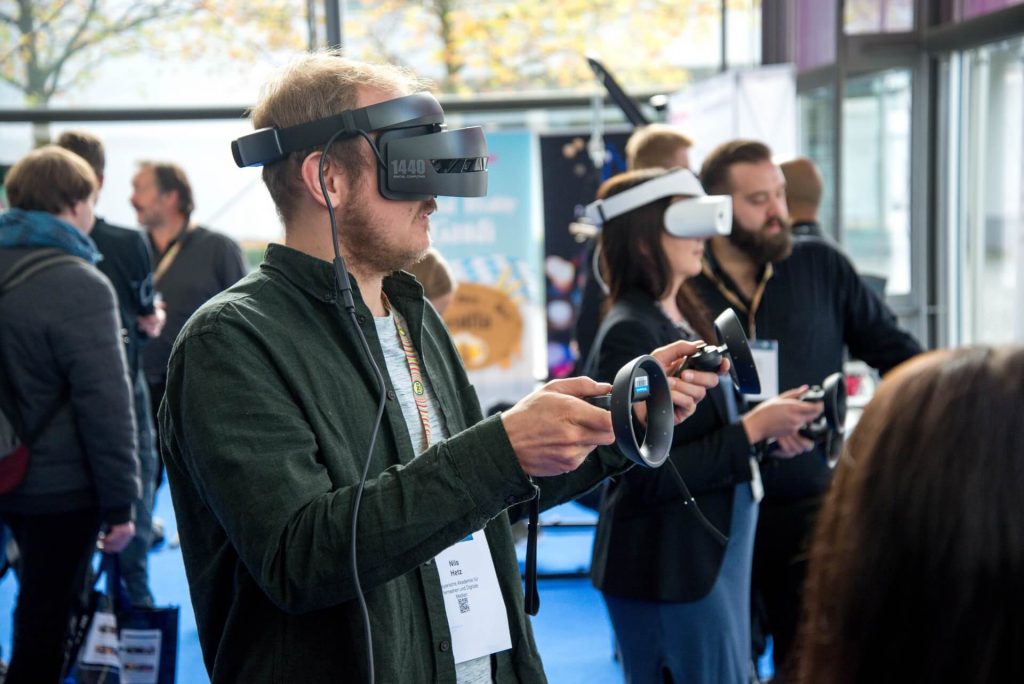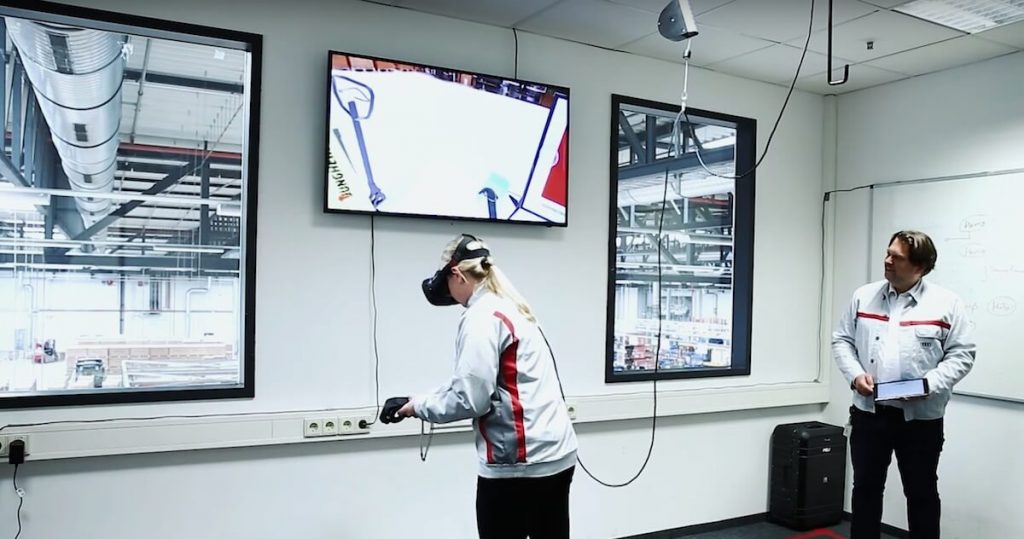Most people only connect virtual reality (VR) technology to the gaming industry. However, it’s so much more than that. Believe it or not, VR training has the power to revolutionize the business world altogether. Throughout history, people have learned how to adjust to different work environments. Since the Coronavirus outbreak, this adaptability has become more crucial than ever. Having a solid and trustworthy skills base in the corporate world has never been more critical. Employers, big and small, are all starting to realize the importance of virtual reality learning and development, especially when using creative methods to assist employees’ skill improvement. Thus, let’s talk about why you should invest in virtual reality learning and development at your workplace and some of its most important benefits!
VR training – What is it?
Before listing the benefits of virtual reality learning and development, let’s see what VR training represents. VR training is an experimental learning experience that recreates real-life scenarios and replicates workplace challenges. It allows employees to receive on-the-job training in a safe setting where they can learn as they do. The retention of skills taught in VR is strong, indicating that they are more likely to be implemented in the workplace and, as a result, contribute to higher productivity. It may be called virtual, but it’s part of today’s reality. Now, let’s see some of the best benefits of this type of training program.
VR L&D training is becoming more affordable
Virtual reality for business training was unthinkable decades ago. The technology was in its early phases of development, and the scarcity of units drove up pricing to astronomical levels.
That reality, though, has shifted. The COVID-19 pandemic partially aided this change. Take Spatial as an example. This VR version of Zoom has seen a 1,000 percent growth in platform usage since March 2020. Employers started implementing it to ease communication throughout the quarantine.
By 2023, the market’s overall value for VR corporate equipment is predicted to rise from $829 million to $4.26 billion. In addition, many leading industries such as healthcare, aviation, law enforcement, and retail are already using this type of equipment. This is good news money-wise. Why? It’s simple. As VR technology and equipment grew, the cost of VR headsets has dropped to around $1,000 or less per device. Therefore, VR training programs are getting more affordable by the day, which is a great reason to invest in virtual reality learning and development.
The most expensive fee for any interested organization would be developing a bespoke VR training program from the ground up, which would range between $50,000 and $150,000. While it may appear to be a significant investment at first, it will result in cost savings depending on the size of the business and the quantity of training provided.
Higher learning retention with VR
Have you ever heard of the term “learning-by-doing”? It’s the most effective approach to acquire new information or build skills, and it’s what VR provides. According to the latest findings, virtual reality learning has a 75% retention rate.
Traditionally, corporate L&D has relied mainly on lectures or audio-visual demonstrations. However, the research found that employees only recall 5% of what they hear during a training session and 20% of what they see in a presentation or a computer module.
How is this possible? The solution lies in how the human brain gathers and organizes new information. VR is such a great learning tool because it engages several senses. All of this sensory data is recorded by the brain in a “mental map” that is connected through different areas of the brain. That’s why the input has a far better chance of sticking.

Workplace safety & high-quality training programs
VR training is helpful because it provides a safe setting for learning high-risk skills by simulating dangerous workplace conditions. VR training solutions have been utilized in industries ranging from defense and aerospace to oil and gas to mimic potentially deadly circumstances without jeopardizing safety and putting employees in constant danger.
Take police officers, for example. Practical police training can help one avoid injuries or fatalities on the job, which is why law enforcement is one of the top industries interested in VR. Officers may practice in various dangerous circumstances using virtual reality training without the risk of being physically hurt. The goal is to educate them on dealing with different situations successfully.
The Multiple Interaction Learning Option Range Pro system, for example, was adopted by the Pima County Sheriff’s Office. It employs a 300-degree interactive VR program with three huge flat-screen displays. Each simulation is developed to be as realistic as possible, and trainers can shift between scenarios in seconds. After training sessions, they meet with authorities to analyze their activities and offer crucial input.
Additionally, many businesses are deciding to take part in a growing trend called metaverse. There are many business opportunities in the metaverse that can help you grow as an employer and employee, as the metaverse is a new virtual realm where people will be able to meet and engage with one another and their environment.
This is an excellent example of how VR learning and development work in real-life workplaces. Not only do employees engage in interactive learning, but they also avoid real dangerous situations during training.
VR & Healthcare
Virtual reality training can have a massive influence on the healthcare industry by teaching healthcare personnel to perform at best possible level. So far, VR has been making a meaningful difference.
VR training is helpful for surgeons who need to gain experience by repeating surgeries to achieve the necessary degree of expertise. VR training may also provide a safe but accurate setting for doctors and nurses working in ERs and medics responding to emergency calls. The virtual reality world can present a variety of situations. It can assist students and practitioners in developing abilities to manage in a high-stress, fast-paced workplace, make critical split-second judgments, and conduct treatments in challenging conditions to help save patient lives.
Patient consultation education that merges VR and artificial intelligence enable practitioners to build communication skills to deal with patients’ emotions in various contexts. They can also improve empathy skills by experiencing symptoms of a patient’s disease in a virtual reality simulation, such as learning what it’s like to suffer sight or hearing loss.
This is one of the best and most noble implementations of artificial intelligence and virtual reality learning and development.
Final thoughts on VR learning and development
We live in the era of technology, and its growth has been faster than ever before. That’s why we need to embrace its power and all it holds. One of these things is VR learning and development. Many companies have recognized the benefits this type of training contains. Not only can VR help companies grow, but it can also perfect the necessary skills and knowledge of employees. So, if you’re looking for reasons to invest in virtual reality learning and development in your workplace, this is definitely it!





